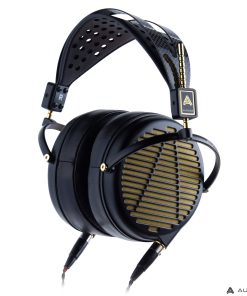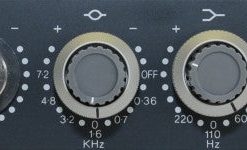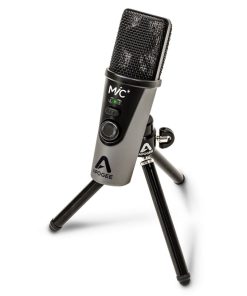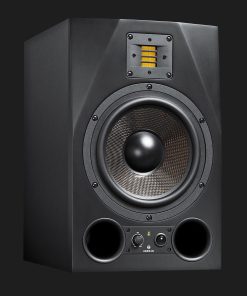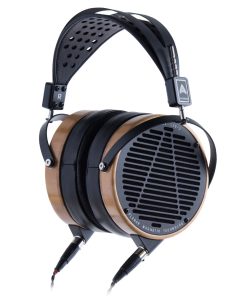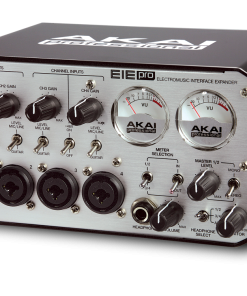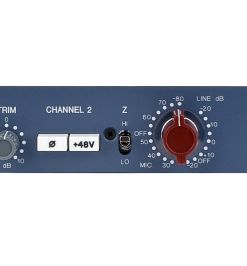Rupert Neve Designs | 5059 Satellite 16 x 2+2 Summing Mixer Rupert Neve Designs
$ 3.999,00 Original price was: $ 3.999,00.$ 999,75Current price is: $ 999,75.
5059 SATELLITE
16 x 2+2 Summing Mixer
Flexible, feature-rich analog summing with classic Rupert Neve console sound.
Built around many of the topologies and custom transformers made famous with the 5088 mixer, the 5059 is a 16 x 2+2 summing mixer designed to deliver the ultimate out-of-the-box sonics and control in a 2U, rack-mountable chassis.
The 5059 features 16 channels with individual level, pan, inserts, stereo-2 sends, and master texture controls, providing easy integration with outboard equipment, complete control for two separate stem mixes, and the ability to dial in analog mojo in two modes. With the same sonic heritage as mixers used to create countless hit records, the 5059 Satellite imbues your tracks with the legendary warmth and presence of a Rupert Neve design.
“The difference in mixing in the box vs. through that summing mixer…it’s unbelievable the effect that it has.”

The Signature of Excellence
The most important element of the 5059 is its legendary sound, the keys to which are the +/-24V class-A topologies and custom transformers, fine-tuned over a number of years to provide exceptional sonic performance and to completely eliminate crossover distortion.
When combined with Mr. Rupert Neve’s transformer design and implementation, the 5059 achieves a remarkable purity, while also conveying the signature warmth and larger-than-life sound reminiscent of Rupert’s classic designs.

Making Connections
One drawback to mixing “in the box” is the inability to use high quality analog outboard equipment. Channel inserts are provided in the 5059 to streamline interconnections with analog outboard equipment and to allow for further expansions of the 5059’s capabilities.
By connecting a second 5059 to the insert outputs of a 5059, the dual stereo outputs can be used as a way to add 4 auxes to each of the 16 channels. And when used with other products from Rupert Neve Designs’ summing family, the 5059 becomes an integral part of a complete modular system for world-class analog mixing and monitoring.
The 5059 also offers a fantastic solution for keyboard or individual instrument mixing, with its 16 pannable inputs, inserts and returns for effects and pedals, and up to 10dB of gain. It also allows for recording a stacked mix of sounds while simultaneously recording each of them individually via the “always on” insert sends.

Silk + Texture = Classic Sounds on Demand
Every mix demands its own treatment. In addition to the choice of outputs, the continuously variable Texture control with Silk Red and Silk Blue modes gives you complete control over the harmonic density and tonality of your mix – or lets you keep it utterly pristine and uncolored.
The Silk Red mode accentuates transformer saturation in the high and high-mid frequencies to amplify the vibrant midrange harmonics associated with Rupert’s vintage equipment, while Silk Blue accentuates saturation of the lows and low-mids to add thickness and weight to any source – especially useful for “thin-sounding” mixes. Unlike EQ, these Silk & Texture controls saturate the output transformers, and add highly musical harmonics to the source material according to the amount of Texture applied.
Drive the mix buss hard, choose your Silk flavor, and crank the Texture knob for a rich, saturated, vintage vibe – or disengage Silk entirely for clear, wide-open sonic beauty. The choice is yours.
With 16 channels of Rupert Neve designed class-A magic and numerous tonal and routing options, the 5059 Satellite mixer will elevate your DAW-based studio’s sound and performance to new heights.

Silk / Texture
Continuously variable Texture control for Silk modes allows the engineer to fine tune the harmonic ratio and tonality of both stereo outputs. Silk switch cycles between Red, Blue, and bypass.
New Class-A Topologies
With zero crossover distortion and unmatched purity, the 5059 sets the standard for rack-mountable summing mixers.
Custom Transformers
Beyond providing galvanic isolation, the custom transformers in the 5059 are a key ingredient to its larger than life sound.
Stereo 2 Send
Sends the channel’s signal to the Stereo 2 buss, thus splitting the input channels into two stems for further processing and mixing with independent Silk.
Channel Level
Individual continuously variable level controls are provided for each channel from -∞ to +10dB.
Channel Pan
Individual continuously variable pan controls are provided on each channel of the 5059 with a 3dB pan law.
Channel Insert
Changes the buss input signal from the line input to the insert return. (Insert sends are always active.)
Master Output Level
Level controls are provided for each of the stereo outputs -∞ to 0dB.
SPECIFICATIONS & DOWNLOADS
FREQUENCY RESPONSE
100K Ohm Load.
+/- 0.1 dB from 20 Hz to 20 kHz
-3 dB @ 3.5 Hz / 185 kHz
NOISE
IEC-A-weighted.
Buss Outputs: -106 dBV
Single Channel assigned @ -∞: -104 dBV
Single Channel assigned @ Unity: 103 dBV
NOISE
Un-weighted, 22 Hz – 22 kHz.
Single Channel assigned @ +10 dB – 100 dBV
BUSS OUTPUTS
Single Channel assigned @ -∞: -101 dBV
Single Channel assigned @ Unity: -100 dBV
Single Channel assigned @ +10 dB -97 dBV
SIGNAL TO NOISE
+20 dBu output un-weighted, 22 Hz – 22kHz: 116 dB
+20 dBu output, IEC A weighted: 119 dB
+4 dBu output unweighted, 22 Hz – 22 kHz: 100 dB
+4 dBu output, IEC A weighted: 103dB
OUTPUT LEVEL
Summing Busses to XLR outputs, Maximum Output Level, 20 Hz to 40 kHz: +26 dBu
Single Channel to Buss, Maximum Output Level, 20 Hz to 40 kHz: +24.5 dBu
TOTAL HARMONIC DISTORTION AND NOISE
1 kHz @ +20 dBu output: Better than 0.003%
20 Hz @ +20 dBu output: Better than 0.005%
TOTAL HARMONIC DISTORTION, SILK ENGAGED
BLUE SILK
100 Hz @ +20 dBu output, texture control 12 o’clock: 0.2% typical
100 Hz @ +20 dBu output, texture control fully CW: 0.65% typical
RED SILK
100 Hz @ +20 dBu output, texture control 12 o’clock: 0.1% typical
100 Hz @ +20 dBu output, texture control fully CW: 0.35% typical
SLEW RATE
4V/uS
CROSSTALK
From Buss 1 to Buss 2.
1 kHz: Better than -90 dB
10 kHz: Better than -70 dB
POWER CONSUMPTION
AC Mains, 100VAC to 240VAC, 50/60 Hz: 45 Watts
Fuses – not user accessible, internal on power supplies
DIMENSIONS
3.5”H (2U), 19”W, 8”D
WEIGHT
23lbs
SHIPPING DIMENSIONS
22” x 17” x 8”
SHIPPING WEIGHT
25 lbs
FREQUENTLY ASKED QUESTIONS
The summing architecture is essentially the same between all three of our Summing Family mixers. They each have different feature sets to address different needs, but sonically they’re all nearly identical.
The main exception would be the secondary -6dB output on the 5057, which reduces the likelihood of clipping the next device in the chain when driving the unit very hard, and thus may allow for greater potential harmonic saturation.
No, you have to chose one output path per channel.
Generally people record the mix output into a stereo input in their DAW, but you can also record to an external tape machine or other “2-track” destination.
Remember: whatever you do, always have a way to monitor your recorded mix so you can reference the final print.
While there isn’t a dedicated mute control on the 5059, if you aren’t using the inserts or Stereo 2 outputs, you could use either of those buttons on a channel to effectively mute the signal.
Not necessarily. We’ve been conditioned to see red peak lights as meaning “bad” – but remember, this is analog, not digital. Oftentimes, the “glued-together” sound we’re looking for from an analog mix buss comes from overdriving the output stage, and this may mean some peaks here and there. Just like with a real analog mixing console, use your ears to tell you when you’re hitting the mix too hard.
Speedy Shipping and professional packaging
Because of our long-standing partnership in a long-standing partnership with UPS, FedEx, DHL and a variety of other world-class carriers, we can provide various shipping options. Our warehouse personnel will pack every item to our exacting specifications. Prior to shipping, your goods are carefully examined and safely secured. We deliver to thousands of clients every day in a variety of countries. The fact that we are committed to becoming the biggest online retailer in the World is clear. We have distribution centers as well as warehouses located in Europe and in the USA.
Note: Orders with more than one item are assigned a processing period in accordance with the item.
Before shipping, we will inspect the ordered items thoroughly. The majority of orders are shipped within 48 hrs. The expected delivery time is between 3 and 7 days.
Returns
The inventory is always changing and we do not completely manage it because multiple stakeholders are involved, including our warehouse and factory. The levels of stock can change at any time. Be aware that it's possible for your order to be out of stock after you have placed the order.
Our policy lasts thirty days. If 30 days have passed since you purchased your item, we will not be able to offer you a return or exchange.
To be returned it must be in its original packaging, unopened and in the condition you received it in. It should also be in the original packaging.
Related products
Plug-ins: Virtual Processors
Plug-ins: Virtual Processors
Plug-ins: Virtual Processors
Software & Plug-ins
HEADPHONES
Plug-ins: Virtual Processors
HEADPHONES
HEADPHONES
Software & Plug-ins
Acon Digital | DeVerberate 3 Reverb Reduction Plug-in Acon Digital
DAW Software
Software & Plug-ins
Software & Plug-ins
Acon Digital | Restoration Suite 2 Noise Reduction Plug-in Bundle Acon Digital
HEADPHONES
Plug-ins: Virtual Processors
Plug-ins: Virtual Processors
Plug-ins: Virtual Processors
Plug-ins: Virtual Processors
Plug-ins: Virtual Processors
USB Microphones
Active Monitor
HEADPHONES
Software & Plug-ins
Audio Interfaces
Software & Plug-ins
2nd Sense Audio | Wiggle Wavetable Synthesizer Plug-in 2nd Sense Audio
Plug-ins: Virtual Processors
Software & Plug-ins
Acon Digital | Acoustica 7 Digital Audio Editor Acon Digital
Audio Interfaces
Software & Plug-ins
Software Bundles
Audiority | Effects Plugin Bundle Plug-in Collection Audiority



















